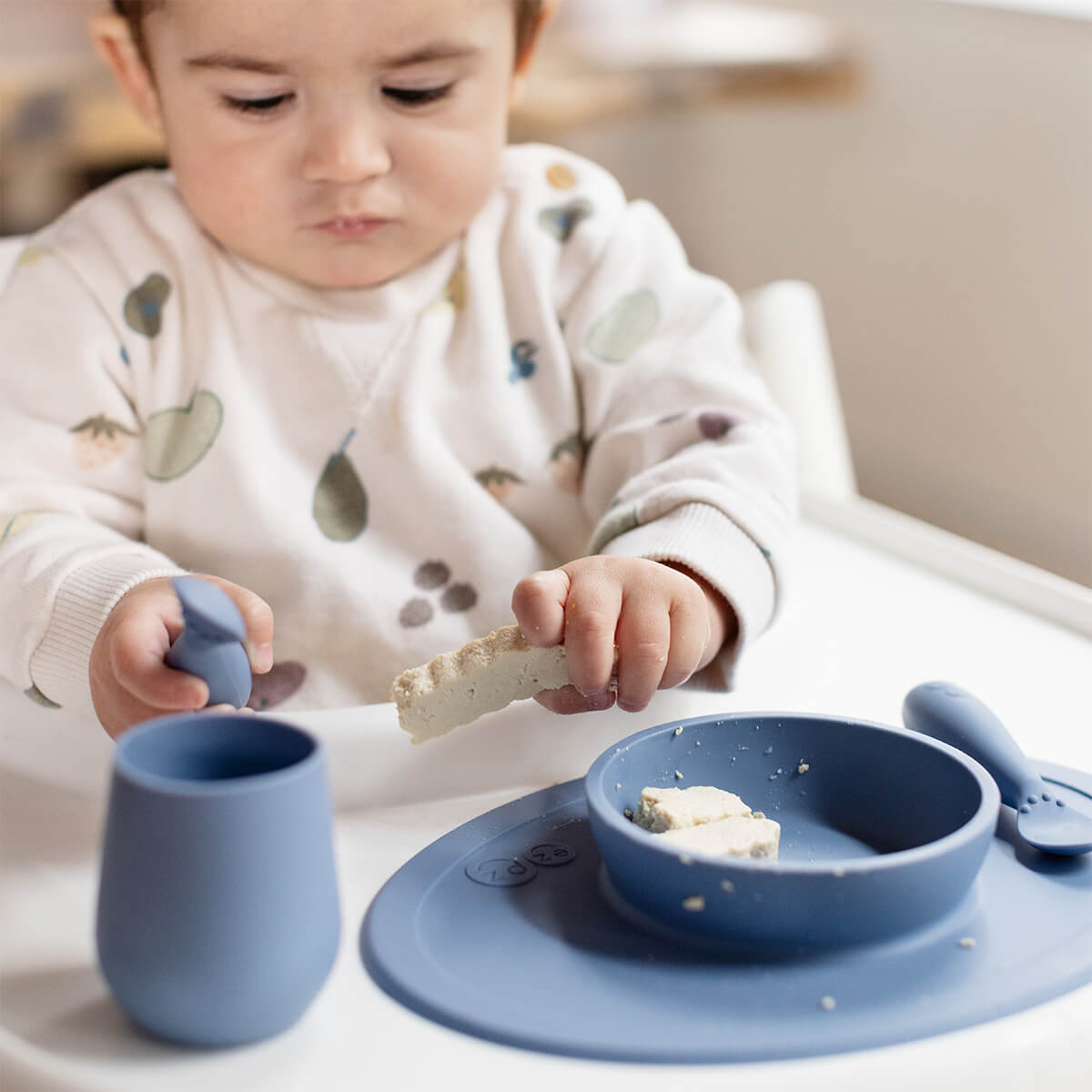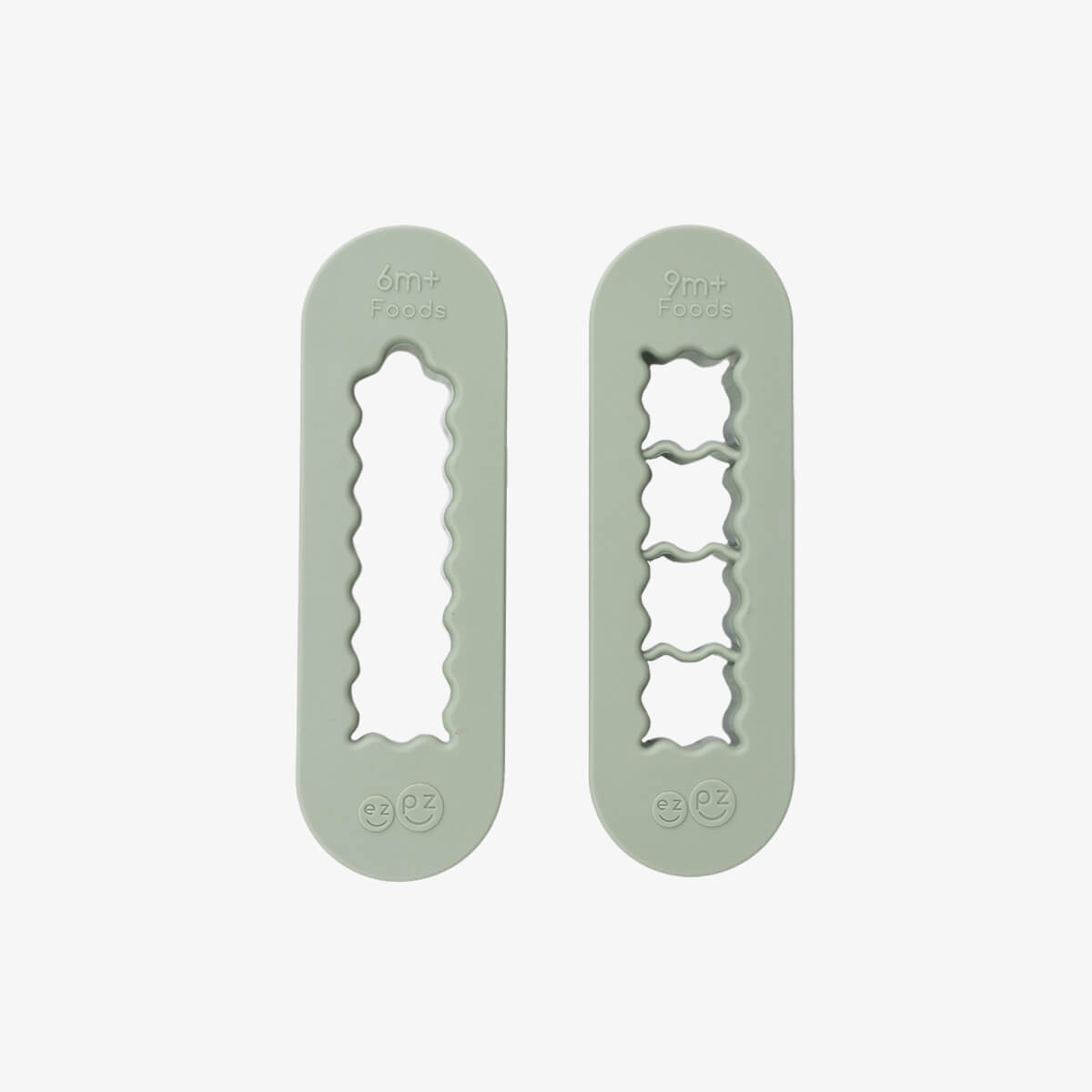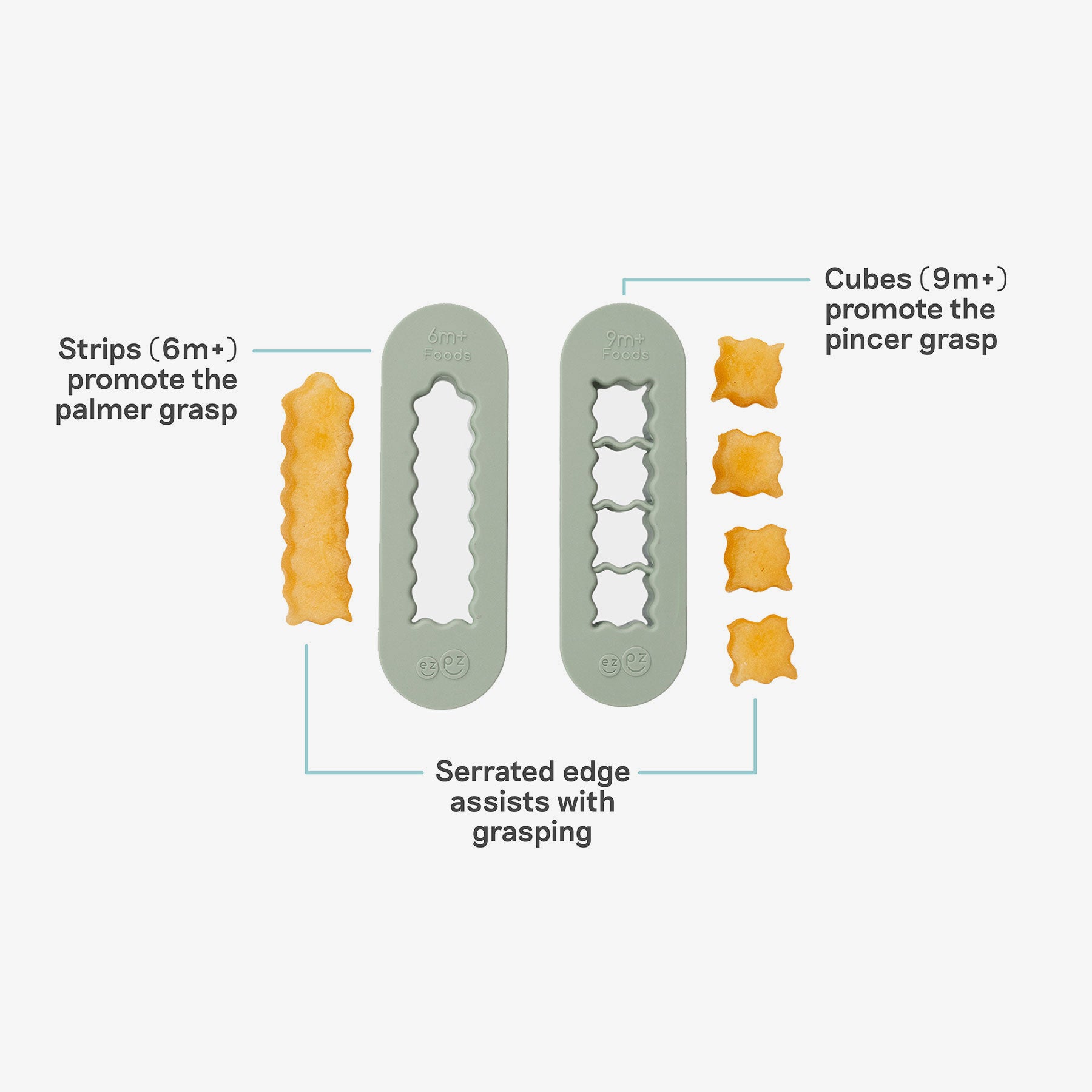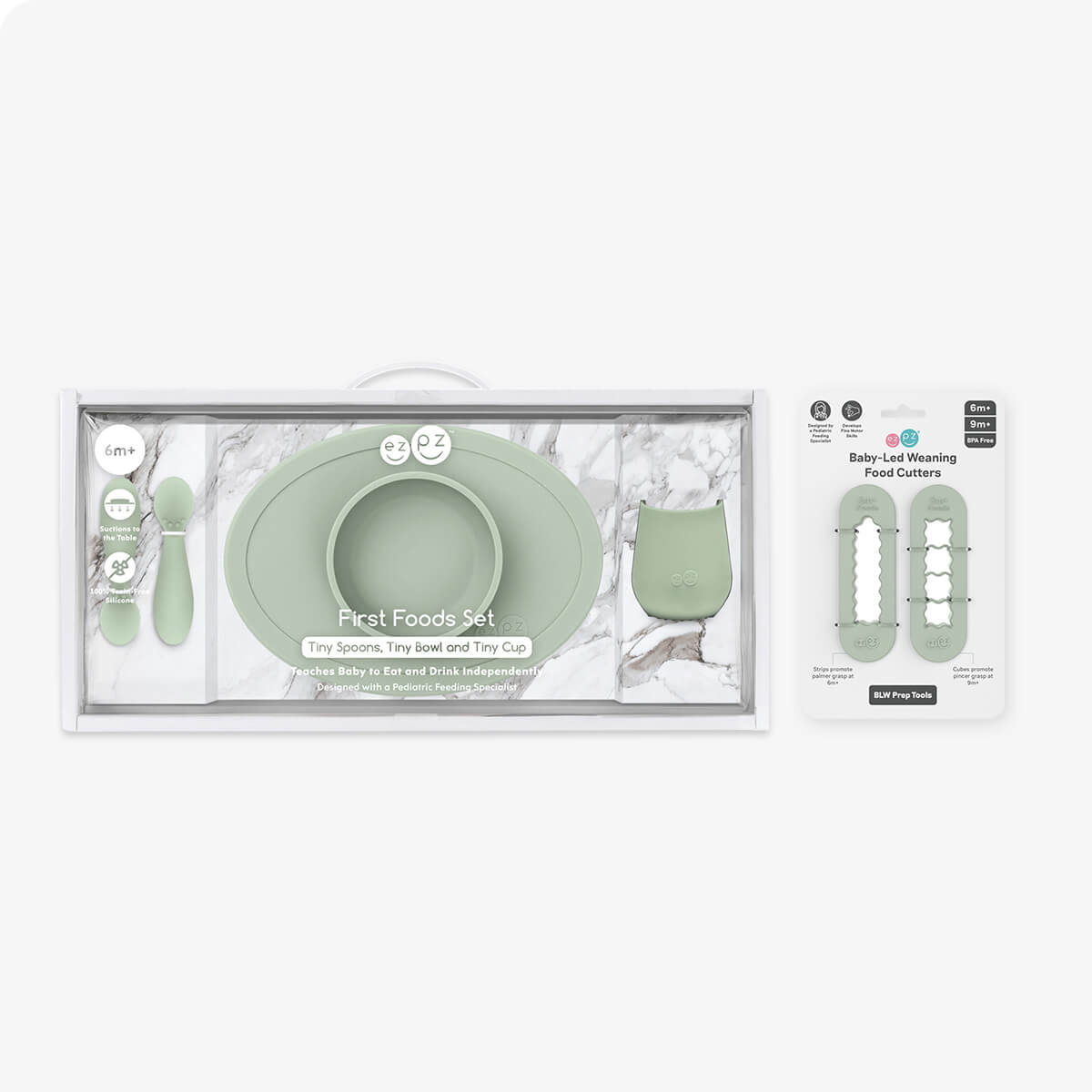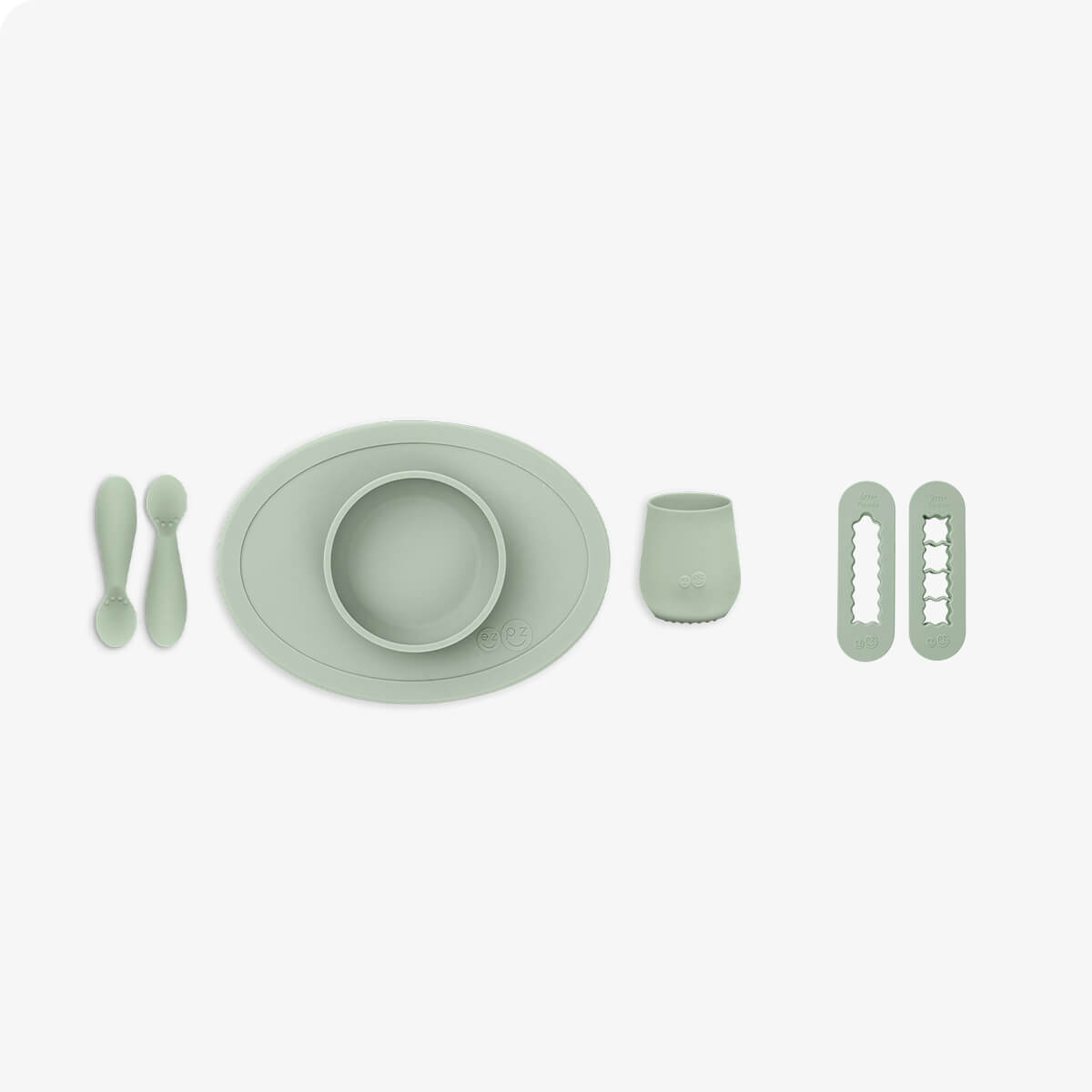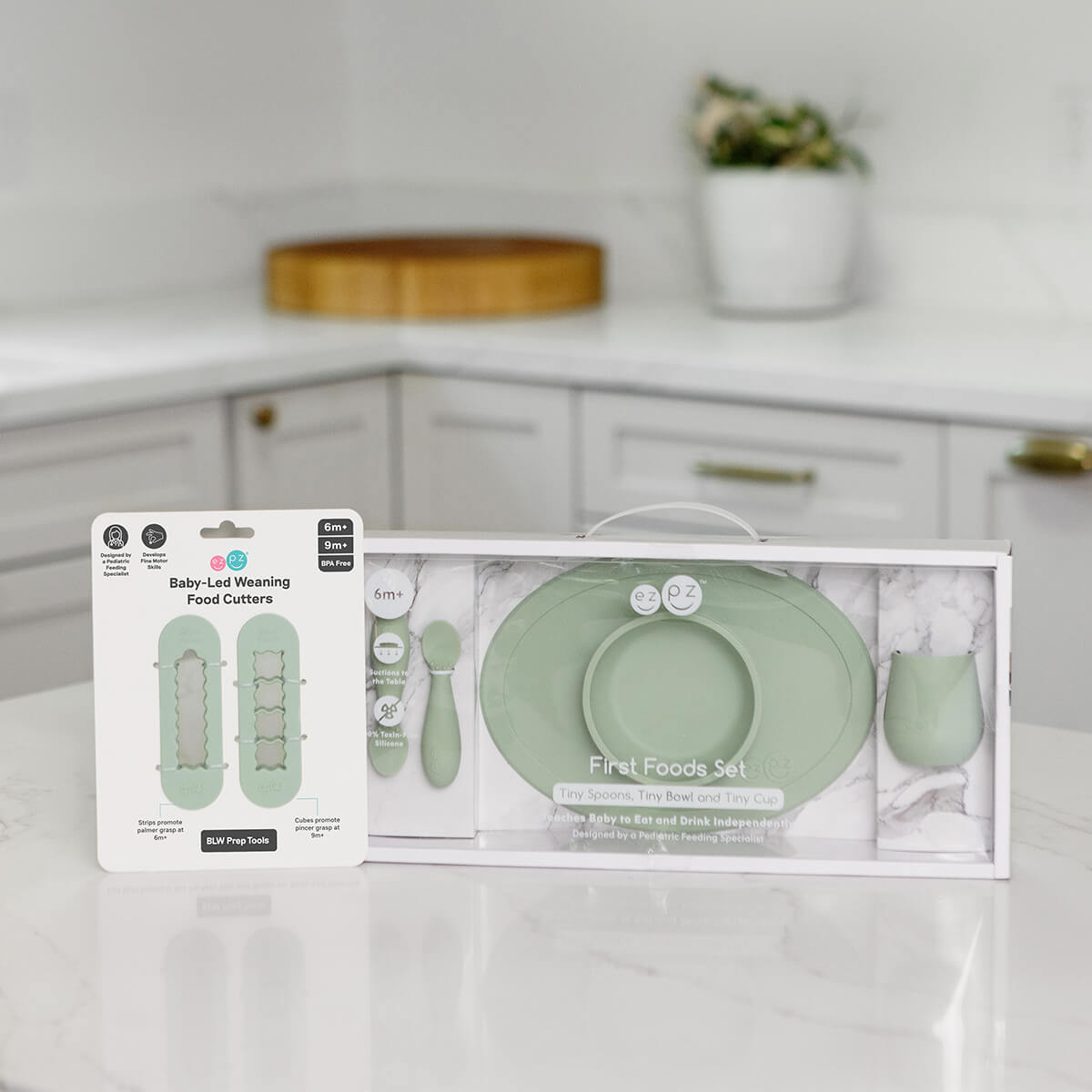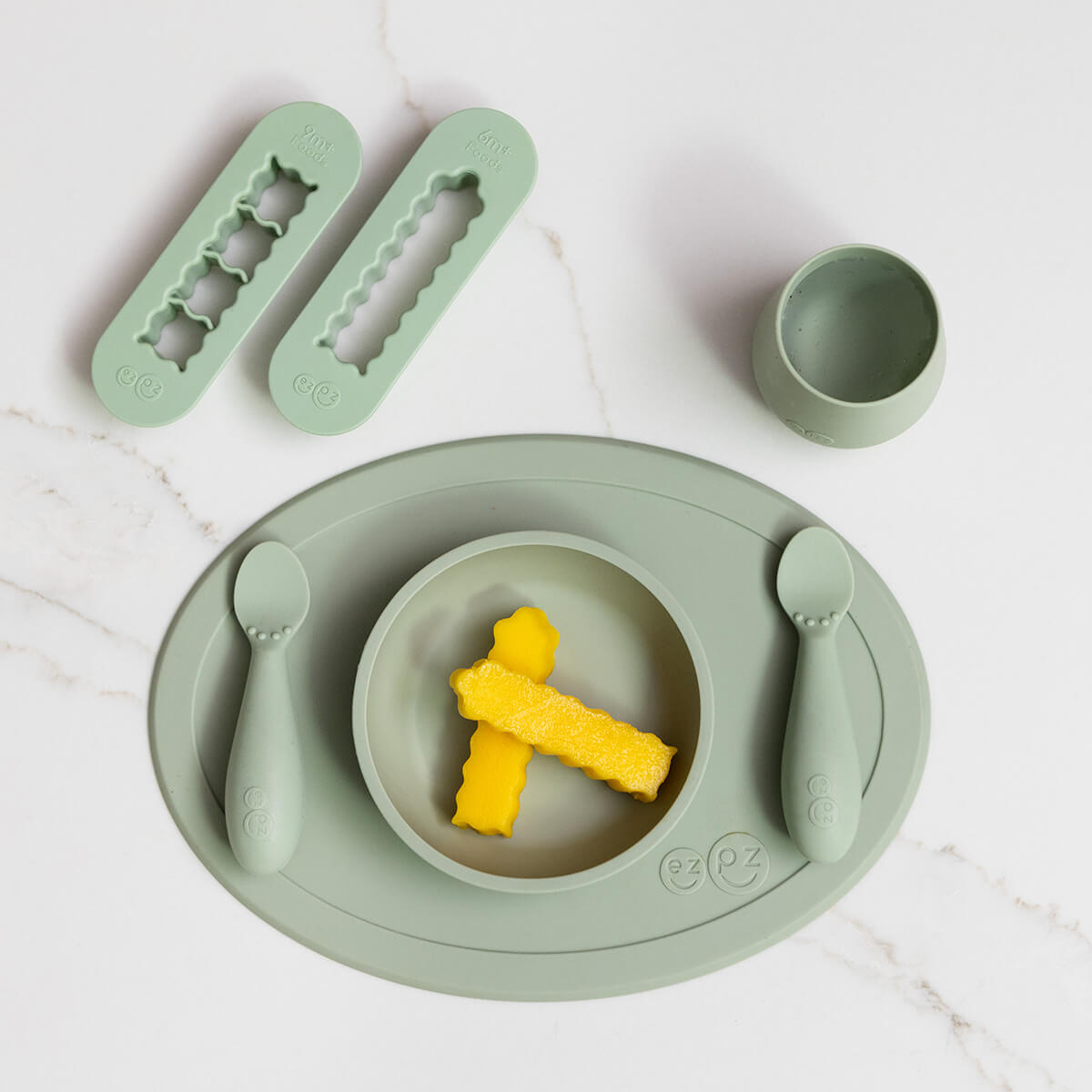Baby-led weaning (BLW) is a feeding approach where babies are introduced to solid foods by eating the same foods as the rest of the family. Once baby is ready to start solids, babies feed themselves with a baby-led™ spoon or by picking up soft strips of food with their hands (instead of being spoon-fed purées by an adult).
Around 9 months, babies begin developing their pincer grasp, allowing them to pick up smaller pieces of food with the tips of their index finger and thumb. The BLW Food Cutters make it easy to prep foods by cutting them into the ideal size and shape for your baby’s age. Plus, the serrated edges help baby grip the food more easily!
Below are 7 foods that are perfect for baby-led weaning—and beyond!

Dragon Fruit
Texture Tips
- Ensure the dragon fruit is ripe and soft to make it a safe texture.
- The texture is slippery with tiny edible seeds that provide a subtle, crunchy, and slightly gritty sensation.
Feeding Tips
- The flesh of dragon fruit can be bright purple or white (both have black seeds). If you have access to both colors, offer them to your baby. The differences in sweetness, juiciness, and color provide a variety of sensory experiences.
- Dragon fruit's vibrant appearance makes it more enticing for babies to explore and eat, whether served in strips or as popsicles (try our Tiny Pops).

Avocado
Texture Tips
- Ensure the avocado is ripe and soft to make it a safe texture.
- Avocado has a heavy and creamy texture that makes it easy for your baby to ‘find it’ in their mouth. This sensory feature is why avocados are a popular first food.
Feeding Tips
- Taste the avocado before serving it to baby, as an overly ripe avocado can have a metallic or bitter taste.
- Offer strips of avocado one week, then change up the sensory experience by cutting most of the flesh off and giving your baby the whole avocado pit to explore and chew on.
Egg
Texture Tips
- Experiment with eggs in various textures. Try offering strips of hard-boiled egg, fried egg, and scrambled eggs too!
- Reduce the risk of food borne illness by ensuring the egg is well-cooked (but still has a soft texture).
Feeding Tips
- Eggs are one of the nine foods (called the ‘Big 9’) that account for 90% of allergic reactions. However, research shows that introducing these nine foods early and often can decrease the risk of developing an allergy.
- The egg protein that can cause allergies is found in the egg white, but it’s important to serve the egg white and yolk together. Fun fact; the yolk is high in iron and adds sensory complexity to the texture, color, and flavor.

Banana
Texture Tips
- Ensure the banana is ripe and soft to make it a safe texture.
- Bananas have a smooth and cohesive texture that makes it easy for babies to safely practice their biting and chewing skills.
Feeding Tips
- Remove the strings and the tip of the banana, as they are harder to chew and may have a bitter taste.
- Bananas provide babies with a new sensory experience through their distinct smell and pleasant flavor.

Tofu
Texture Tips
- Tofu comes in many different textures that your baby may enjoy such as 'silken' (soft) to 'extra-firm' (dense and moist).
- If the texture is too watery, press with a paper towel to remove excess moisture. Then cut into strips.
Feeding Tips
- Tofu (soy/soybean) is one of the nine foods (called the ‘Big 9’) that account for 90% of allergic reactions. However, research shows that introducing these nine foods early and often can decrease the risk of developing an allergy.
- Change the texture, color, and flavor of tofu by marinating it and then baking or frying it.

Mango
Texture Tips
- Mango is smooth with a juicy, slightly fibrous consistency. After cutting the mango, use your fingers to remove any visible fibers.
- Ensure the mango is ripe and soft to make it a safe texture.
Feeding Tips
- Offer strips of mango at mealtime and provide the whole mango pit for oral exploration and teething.
- To add sensory opportunities to the strips of mango, incorporate a squirt of lime or lemon juice or a light sprinkle of mild chili powder.

Honeydew
Texture Tips
- Honeydew has an inner flesh that is smooth and tender, with a velvety texture that often develops a slight stickiness.
- Cut off the rind and make sure all the firm green skin is removed. Scoop out all seeds before serving.
- Ensure the honeydew is ripe and soft to make it a safe texture.
Feeding Tips
- Honeydew is juicy, which may be challenging for your baby to handle without drooling. Have baby take sips from an open cup to practice lip closure movements in between bites (try our Tiny Cup).
- Avoid using a melon baller, as the circular shape of the fruit balls can pose a choking risk.

Consult with Professionals
Consult with a pediatrician before starting solids if you have any concerns. If your baby is not eating and swallowing by eight months, ask your pediatrician for a referral to a speech-language pathologist or occupational therapist who specializes in feeding.


